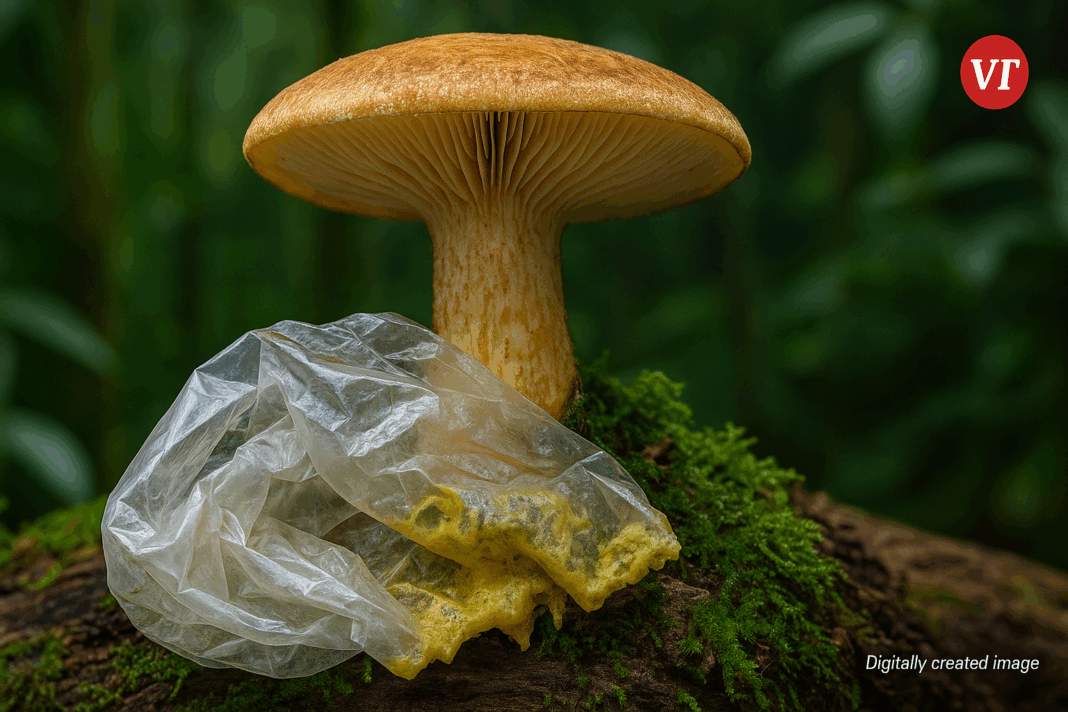- A rare fungus discovered in the Amazon rainforest can degrade polyurethane plastic.
- Pestalotiopsis microspora can metabolize plastic even without oxygen.
- The fungus uses serine hydrolase to break plastic down into organic compounds.
- Scientists are exploring its use in landfill remediation and waste management.
The Big Picture
In the heart of the Amazon rainforest, scientists have uncovered a biological marvel that could reshape the fight against plastic pollution. A rare fungus known as Pestalotiopsis microspora has demonstrated the ability to degrade polyurethane plastic—even in environments devoid of oxygen—offering a potential breakthrough in global waste management, according to National Geographic.
A Fungus That Eats Plastic
The discovery was made in 2011 by a team of Yale University researchers during a field expedition to Ecuador. While cataloging microbial life in the rainforest, they identified Pestalotiopsis microspora as a fungus capable of using polyurethane (PUR) as its sole carbon source—a trait previously undocumented in fungi, as reported by Yale News.
— Jonathan Russell, as quoted by Yale News
Polyurethane is a common plastic found in everything from insulation and adhesives to furniture and footwear. Unlike other plastics, it is notoriously difficult to recycle and often ends up in landfills, where it can persist for decades, according to Encyclopedia Britannica.
 An illustrative image showing plastics scattered in the Amazon rainforest.
An illustrative image showing plastics scattered in the Amazon rainforest.
Enzymatic Breakdown, Not Just Fragmentation
What sets Pestalotiopsis microspora apart from other plastic-degrading microbes is its enzymatic efficiency. The fungus secretes serine hydrolase, an enzyme that breaks down polyurethane into simpler organic compounds. Unlike microbes that merely fragment plastic into microplastics, this fungus fully metabolizes the material—transforming it into biomass, according to Science Magazine.
— As described in Science Magazine
This metabolic capability is especially significant in anaerobic environments, such as landfills, where oxygen is scarce and most biological degradation slows to a crawl, as noted by Environmental Science & Technology.
A Tool for Landfill Remediation?
The implications of this discovery are profound. If harnessed effectively, Pestalotiopsis microspora could be deployed in bioreactors or landfill remediation systems to accelerate the breakdown of polyurethane waste. Its ability to function without oxygen makes it uniquely suited for subterranean or sealed waste sites, where traditional composting and recycling methods fail, as reported by National Geographic.
However, experts caution that scaling up fungal degradation is not without challenges. Environmental control, degradation speed, and containment are all factors that must be addressed before the fungus can be used commercially, according to Nature Reviews Microbiology.
Nature’s Answer to a Man-Made Problem?
Plastic pollution remains one of the most pressing environmental issues of our time. Over 300 million tons of plastic are produced annually, with a significant portion ending up in oceans and landfills, according to the United Nations Environment Programme.
The discovery of Pestalotiopsis microspora offers a glimpse into how nature may already hold the solutions to some of humanity’s most intractable problems, as noted by Science Daily.
— Scott Strobel, as quoted by Yale News
Quick Facts
- Organism: Pestalotiopsis microspora
- Plastic Targeted: Polyurethane (PUR)
- Discovery Site: Ecuadorian Amazon
- Research Institution: Yale University
- Year Discovered: 2011
- Key Enzyme: Serine hydrolase
- Conditions: Aerobic and anaerobic
Heart Disease Explained: Causes and Cholesterol Myths
Why U.S. Fertility Rates Are Declining
Follow Virginia Times for regular news updates. Stay informed with the latest headlines, breaking stories, and in-depth reporting from around the world.
A global media for the latest news, entertainment, music fashion, and more.















